Step Back in Time: Must-Visit Destinations for History Buffs
Imagine stepping into a world where the past comes alive, where each cobblestone and ancient wall whispers stories of yesteryears. For history buffs, the allure of time travel is not a futuristic fantasy but a tangible journey through destinations steeped in rich heritage. This article embarks on a voyage across 9 remarkable places that serve as portals to different epochs, offering an immersive experience into the annals of human civilization. These destinations promise not only a visual feast but also a profound connection with the past, making them essential visits for anyone passionate about history. From ancient ruins to preserved towns, each location is a testament to the ingenuity, resilience, and cultural evolution of humanity. As we delve into these historical wonders, prepare to be transported through time, gaining insights into the lives, struggles, and triumphs of those who came before us.
1. The Timeless Majesty of Machu Picchu, Peru
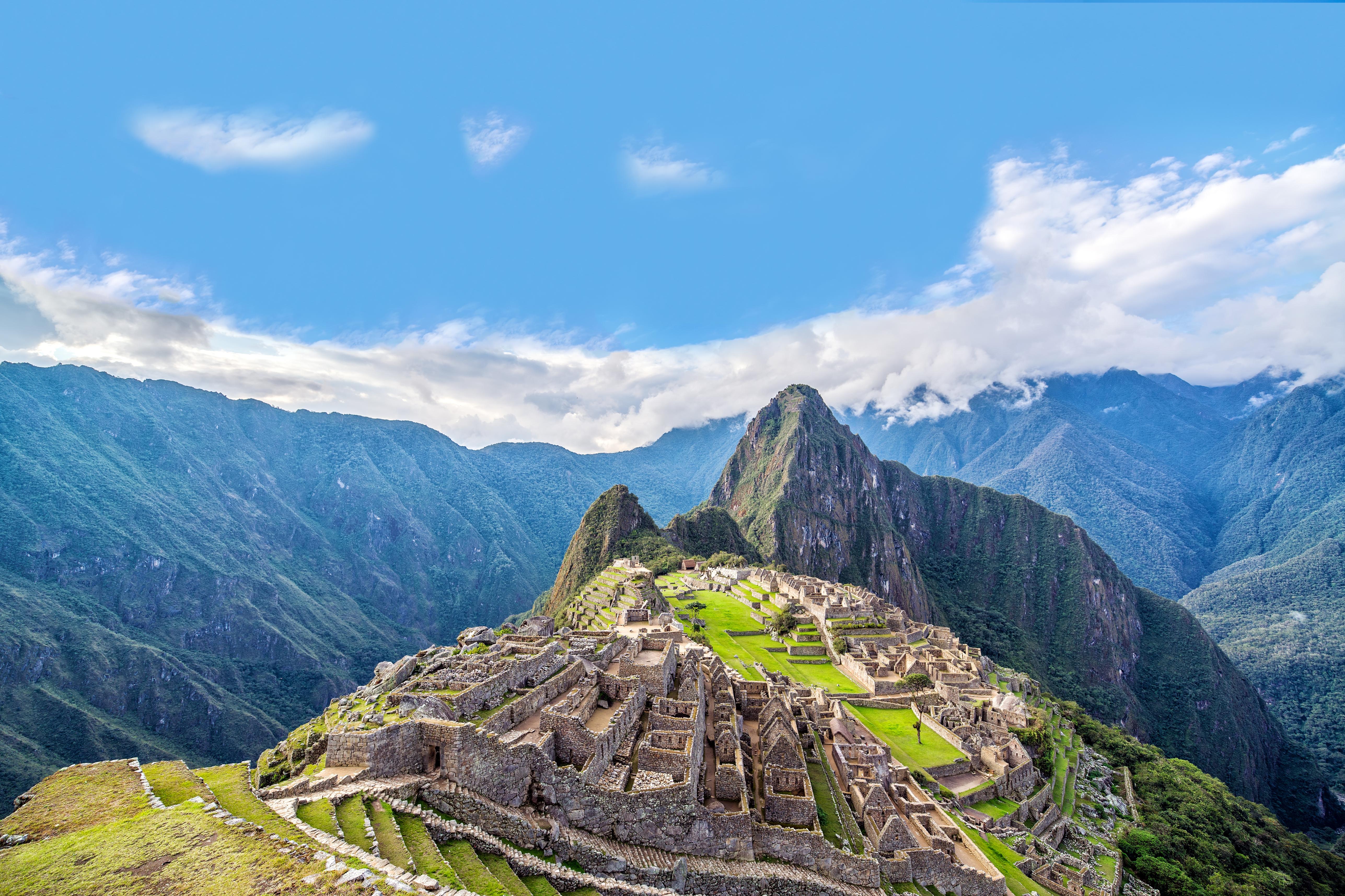
Perched high in the Andes Mountains, Machu Picchu stands as a testament to the architectural and engineering prowess of the Inca civilization. This 15th-century citadel, shrouded in mist and mystery, offers a glimpse into the spiritual and societal intricacies of the Incas. The site’s terraces, temples, and astronomical alignments reflect a deep understanding of agriculture, astronomy, and architecture. Walking through its stone pathways, one can almost hear the echoes of ancient rituals and bustling marketplaces. The breathtaking scenery surrounding Machu Picchu, coupled with its historical significance, makes it a must-visit for those yearning to explore the ingenuity of pre-Columbian civilizations. Machu Picchu's discovery in 1911 by Hiram Bingham brought global attention to the Inca Empire's achievements. Today, it is a UNESCO World Heritage Site and one of the New Seven Wonders of the World, drawing millions of visitors annually. Despite its popularity, efforts to preserve its fragile ecosystem and cultural heritage are paramount. The site exemplifies the delicate balance between tourism and conservation, offering lessons in preserving historical integrity while sharing its wonders with the world. Visiting Machu Picchu is not just a journey through time but also a call to appreciate and protect our shared human heritage.
2. The Ancient Mystique of Egypt’s Pyramids

The pyramids of Egypt, particularly those at Giza, are iconic symbols of ancient Egyptian civilization and architectural genius. These monumental structures, built as tombs for pharaohs, have stood for over 4,500 years, capturing the imagination of historians and travelers alike. The Great Pyramid of Giza, the last of the Seven Wonders of the Ancient World still in existence, continues to intrigue with its precise construction and astronomical alignments. Exploring the pyramids allows visitors to delve into the beliefs and practices of ancient Egyptians, understanding their concepts of the afterlife and divine rule. The pyramids are more than mere tombs; they are embodiments of a civilization’s quest for immortality and cosmic harmony. The construction techniques, involving massive stone blocks transported and assembled with remarkable precision, remain a topic of debate and wonder. The pyramids' alignment with celestial bodies underscores the Egyptians' advanced understanding of astronomy. A visit to these ancient structures offers a profound connection to a civilization that laid the foundations for many aspects of modern society, from writing to governance. The pyramids invite us to ponder the mysteries of human achievement and the enduring legacy of ancient cultures.
3. The Roman Legacy of the Colosseum, Italy
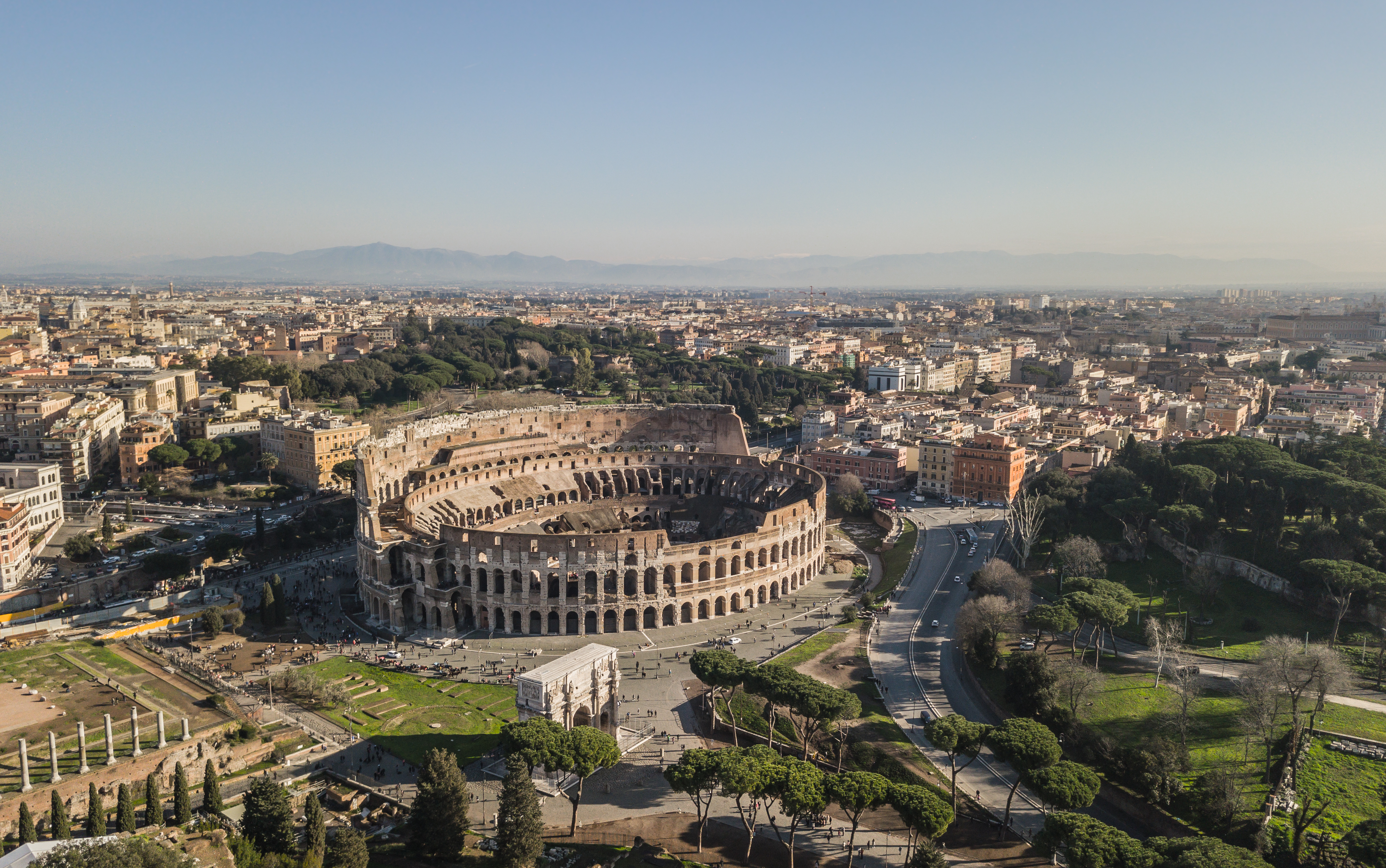
In the heart of Rome, the Colosseum stands as a monumental reminder of the grandeur and complexity of the Roman Empire. This ancient amphitheater, capable of seating up to 80,000 spectators, was the epicenter of Roman entertainment, hosting gladiatorial contests, animal hunts, and public spectacles. The Colosseum's architectural brilliance, featuring a complex system of vaults and arches, showcases the Romans' mastery of engineering and construction. Visiting the Colosseum offers a glimpse into the societal norms and cultural values of ancient Rome, where power, spectacle, and public engagement were intertwined. Beyond its function as an entertainment venue, the Colosseum symbolizes the imperial might and social dynamics of Rome. Its construction, initiated by Emperor Vespasian in AD 72, was a political statement, demonstrating the emperor's commitment to the populace. The amphitheater's enduring presence amidst the modern cityscape of Rome serves as a poignant reminder of the empire's vast influence on Western civilization. Exploring the Colosseum allows history enthusiasts to connect with the grandeur and complexity of Roman society, understanding its contributions to law, governance, and urban planning that continue to shape our world today.
4. The Medieval Charm of Mont Saint-Michel, France

Rising dramatically from the waters of Normandy, Mont Saint-Michel is a marvel of medieval architecture and spirituality. This island commune, crowned by a stunning abbey, has been a pilgrimage site for centuries, drawing visitors with its ethereal beauty and historical significance. The abbey's Gothic spires and Romanesque elements reflect the artistic and religious fervor of the Middle Ages. As the tides sweep in and out, Mont Saint-Michel transforms, offering a mystical experience that has captivated pilgrims and travelers for generations. Mont Saint-Michel's strategic location and formidable fortifications also highlight its historical role in military defense and regional power struggles. During the Hundred Years' War, it withstood numerous sieges, becoming a symbol of French resilience. Today, it is a UNESCO World Heritage Site, attracting millions who come to marvel at its architectural splendor and experience its unique atmosphere. A visit to Mont Saint-Michel is a journey into the heart of medieval Europe, where faith, art, and history converge in a breathtaking natural setting. It invites history buffs to explore the complexities of medieval life and the enduring power of human creativity and devotion.
5. The Ancient Wonder of Petra, Jordan
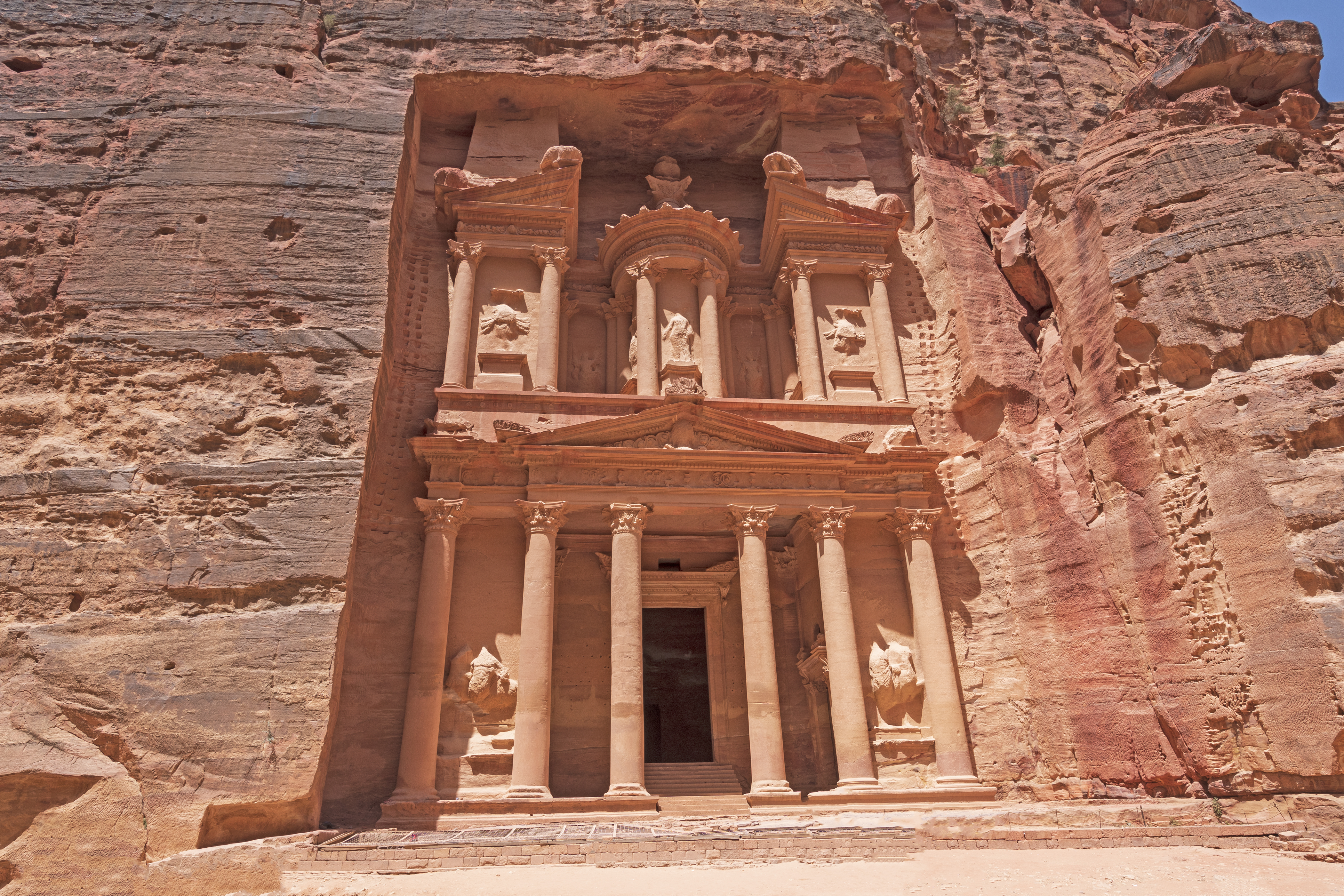
Hidden within the rose-red cliffs of southern Jordan, Petra is an archaeological wonder that reveals the ingenuity of the Nabataean civilization. This ancient city, carved directly into the rock, served as a thriving trade hub and cultural melting pot in the Arabian Desert. The iconic Treasury, with its intricate façade, is just the beginning of Petra's architectural marvels. Exploring its tombs, temples, and amphitheaters offers insights into the Nabataeans' advanced engineering skills and their interactions with Greek, Roman, and Egyptian cultures. Petra's strategic location along the incense trade routes contributed to its prosperity and cultural exchange. Its hydraulic engineering, including an extensive system of dams and water channels, highlights the Nabataeans' adaptability to the harsh desert environment. Rediscovered by the Western world in the early 19th century, Petra is now a UNESCO World Heritage Site, captivating visitors with its blend of natural beauty and historical significance. For history enthusiasts, Petra offers a journey into the heart of an ancient civilization that thrived through innovation and cultural synthesis, leaving an indelible mark on the region's history.
6. The Cultural Tapestry of Kyoto, Japan

Kyoto, once the imperial capital of Japan, is a city where tradition and modernity coexist in harmonious balance. Renowned for its well-preserved temples, shrines, and gardens, Kyoto offers a window into Japan's rich cultural heritage. The city's historic districts, such as Gion and Higashiyama, transport visitors to the Edo period, with their wooden machiya houses and narrow, lantern-lit streets. Kyoto's temples, including the iconic Kinkaku-ji (Golden Pavilion) and Fushimi Inari-taisha, reflect the spiritual and artistic achievements of Japanese civilization. Kyoto's cultural significance extends beyond its architectural treasures. It is a center for traditional arts, including tea ceremonies, kimono weaving, and Noh theater. The city's seasonal festivals, such as Gion Matsuri, offer vibrant displays of cultural heritage and community spirit. Kyoto's blend of history and living tradition makes it a captivating destination for history buffs seeking to explore Japan's unique cultural evolution. A visit to Kyoto is a journey through time, where the past informs the present, and the timeless beauty of Japanese aesthetics continues to inspire.
7. The Historical Layers of Istanbul, Turkey
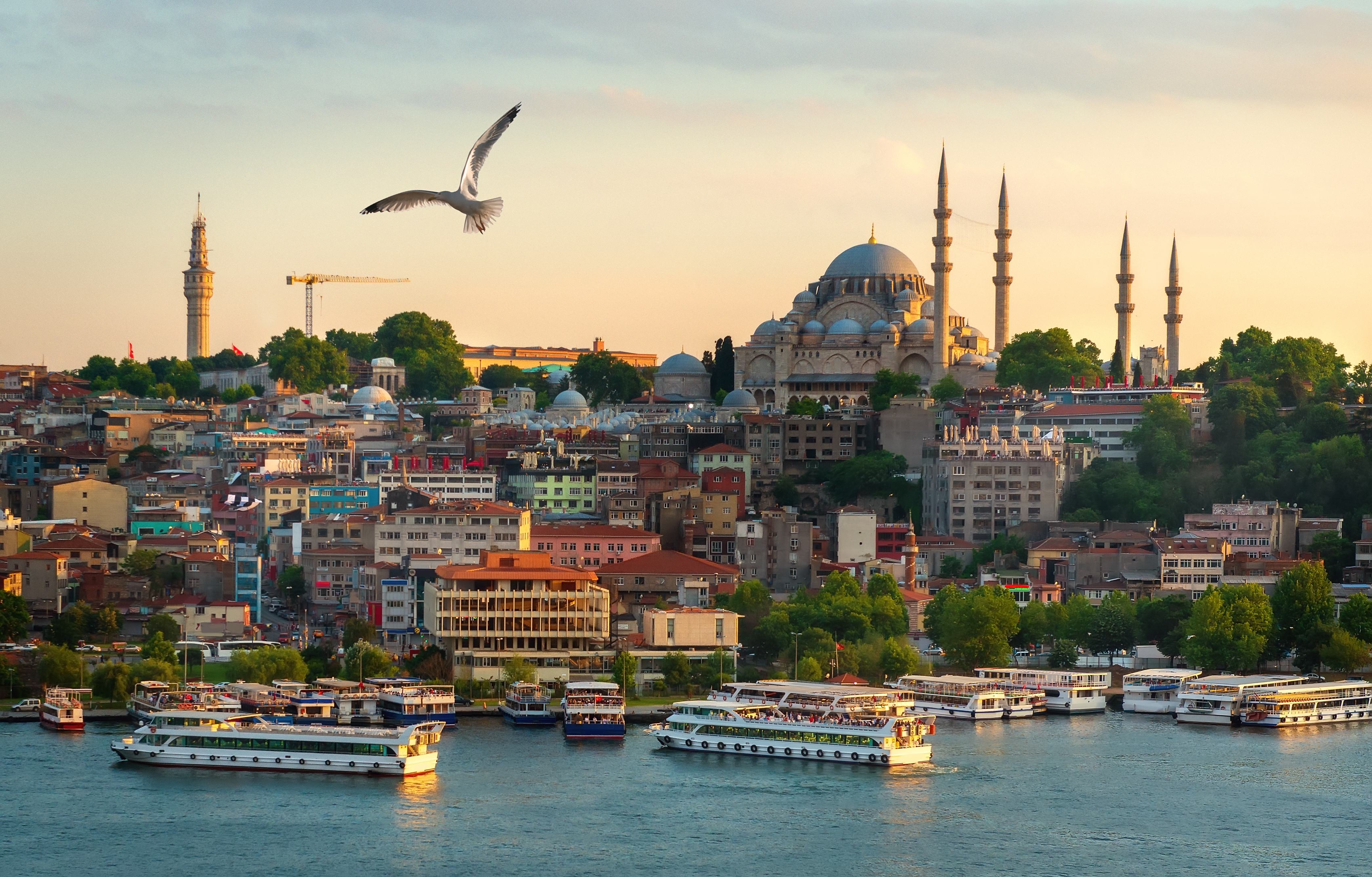
Straddling two continents, Istanbul is a city of contrasts and confluences, where East meets West in a vibrant tapestry of history and culture. Formerly known as Byzantium and Constantinople, Istanbul's rich past is reflected in its diverse architectural and cultural heritage. The Hagia Sophia, with its massive dome and stunning mosaics, stands as a testament to the city's Byzantine glory, while the Blue Mosque and Topkapi Palace highlight its Ottoman grandeur. Exploring Istanbul is a journey through time, where each neighborhood reveals layers of history and cultural exchange. Istanbul's strategic location has made it a crossroads of civilizations, influencing its art, architecture, and cuisine. The city's bustling bazaars, such as the Grand Bazaar and Spice Bazaar, offer a sensory experience of its vibrant trade history. As a UNESCO World Heritage Site, Istanbul continues to attract those eager to explore its historical and cultural riches. For history enthusiasts, Istanbul offers a unique opportunity to witness the interplay of diverse cultures and empires, understanding how they have shaped the city's identity and contributed to global history.
8. The Enigmatic Ruins of Angkor, Cambodia

Deep within the jungles of Cambodia, the ruins of Angkor stand as a testament to the grandeur of the Khmer Empire. This vast complex, dominated by the iconic Angkor Wat, is a masterpiece of architecture and spirituality. Built in the early 12th century, Angkor Wat is the largest religious monument in the world, reflecting the Khmer's devotion to Hinduism and later Buddhism. The intricate bas-reliefs and towering spires of Angkor Wat tell stories of mythological and historical significance, offering insights into the beliefs and artistic achievements of the Khmer civilization. Beyond Angkor Wat, the ruins of Angkor Thom, Ta Prohm, and Bayon reveal the empire's architectural ingenuity and cultural synthesis. The city's hydraulic engineering, including an extensive network of reservoirs and canals, highlights the Khmer's adaptation to their environment and their ability to sustain a large urban population. Angkor's rediscovery in the 19th century sparked global interest in Southeast Asian history and archaeology. Today, it is a UNESCO World Heritage Site, drawing visitors from around the world to explore its enigmatic ruins and uncover the mysteries of a once-great empire.
9. The Colonial Heritage of Havana, Cuba
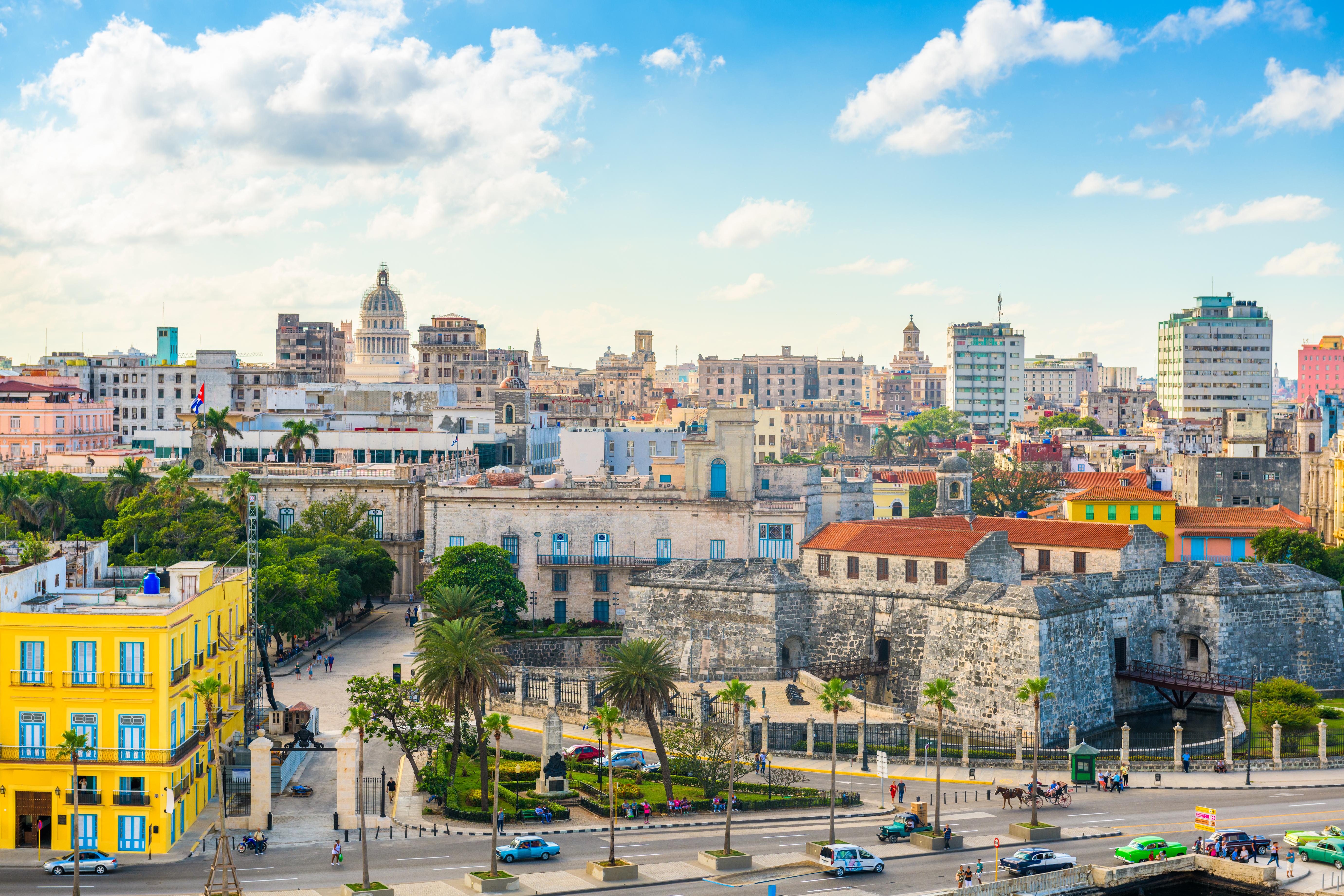
Havana, the vibrant capital of Cuba, is a city where colonial history and Caribbean culture converge in a colorful mosaic. Founded in 1519, Havana's Old Town, or Habana Vieja, is a UNESCO World Heritage Site, renowned for its well-preserved colonial architecture and lively atmosphere. The city's cobblestone streets, lined with pastel-hued buildings and vintage cars, transport visitors to a bygone era. Landmarks such as the Cathedral of Havana, Castillo de la Real Fuerza, and the Malecón reflect the city's rich colonial heritage and its role as a major port in the Spanish Empire. Havana's cultural vibrancy extends beyond its historical architecture. The city's music, dance, and art scenes are a testament to its dynamic cultural synthesis, influenced by African, Spanish, and indigenous traditions. The rhythms of salsa and son, the flavors of Cuban cuisine, and the warmth of its people create an unforgettable experience for visitors. For history buffs, Havana offers a unique opportunity to explore the complexities of colonial history and its enduring impact on Cuban identity and culture. A visit to Havana is a journey into the heart of the Caribbean, where history and culture come alive in a kaleidoscope of sights and sounds.
Traveling to these historical wonders is an opportunity to learn, reflect, and gain a deeper appreciation for the diverse cultural heritage that enriches our global society. It is a chance to embrace the complexities of history, acknowledging both its triumphs and its challenges, and to carry forward the lessons and inspirations it offers. As we journey through time, let us celebrate the wonders of our shared human heritage and the endless possibilities for discovery and connection that history provides.








